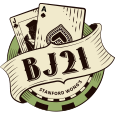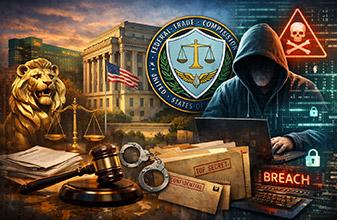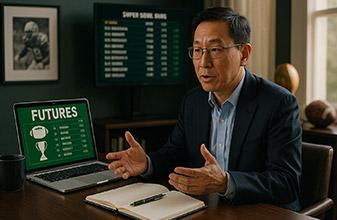standard index vs. "Tech-Art"
blackjack decks that are used in casino play are not the same kinds of cards that consumers buy in regular stores like Bicycle and Tally-Ho. everyday poker cards are printed in a format known as "standard index" which is the usual small number and suit symbol located on the upper left and lower right corners of each card. you will see this type if you play real table poker in a casino, but not for blackjack. for 21 games, casinos order a special layout which is called "Tech-Art". at first glance you can hardly notice the difference between the two formats, and I gather that many people have played casino blackjack for years not realizing what or why a dealer can see certain things in his viewfinder but not others (and keep a straight face the whole time too!).
the main reason regular people are not familiar with Tech-Art playing cards is because you can't buy them in regular stores. You have to find them in casino gift shops, or gambling specialty outlets, or buy them on ebay. And when you do find a real Tech-Art deck, it's 'cancelled' by the casino with a hole drilled in the middle, corners cut or shaved off, and/or black ink splattered on the edges, so they can't be snuck back into legal play again. And even so, not all cancelled casino cards are Tech-Art cards (through conversely, ALL Tech-Art cards come only from casinos). I've collected over 30 decks of casino-used decks so far and can now see the differences between all the formats. here's what you need to know:
1. numbers 2 through 9 - these are generally the same as standard index except that the symbols at the corners are printed a half inch space downwards from the corner. if you try and stick these cards into a blackjack table viewfinder, you will see nothing...no matter which direction you hold it. if you ever wondered if the dealer knows what card is in the hole if it is not an ace, 10 or face card, the answer is...NO. so stop daydreaming that he or she is gonna give you some kind of magic signal when it's your turn to hit or stand (raise one eyebrow for a pat hand...raise both for a stiff...yeah right!)
2. tens and face cards - these are exactly the same as standard index. you can see these in the viewfinder if you stick them in SIDEWAYS. that is why when the dealer has an ace up, he'll turn his hand horizontally before asking for insurance. when inserted vertically into a viewfinder, the dealer will not see anything EXCEPT an ace (see below). as much as you think your dealer has an evil look in his eye when he has a 20, the truth is, he has no idea.
3. aces - Tech-Art aces have the symbols printed on all four corners, but in two different ways! on the upper left and lower right (the standard corners), the ace is indented like numbers 2 through 9. that's because if the dealer has an ace up and another ace in the hole, that's not a blackjack and the dealer still won't know what's underneath. However, a situation that occurs more often is when a dealer has a 10 or face card up and needs to check for an ace underneath. If you were using a standard index deck and slid any card into the viewfinder vertically, nothing would ever be seen. but since the Tech-Art ace has the additional two corners printed directly on the edge of the upper right and lower left, the dealer will be able to detect it properly. some casinos use their resort logo or some other unique symbol in those corners instead of the letter "A", but the effect is the same...you LOSE! (or push if you're lucky)
calista who bought the used blackjack table, is probably trying to use the viewfinder with a standard index deck, which of course won't work. there is no situation where a dealer would ever have to check for a 9 in the hole. if you live in vegas, get some Tech-Art decks from the Gamblers General Store, or check out the shop at your favorite casino. otherwise, search for "casino playing cards" on ebay (look for auctions that have a picture of the cards spread out so you can determine if they are the right format). most cancelled blackjack decks can generally be had for a dollar each, which is much cheaper then a new deck of Hoyle at the drugstore anyway!










